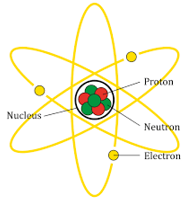We elaborate the uses of Strontium and atomic properties with characteristics. Strontium is a whitish silver metallic chemical element with an atomic number 38. Its symbol is Sr and it belongs to the group of alkaline earth metals and its usual state in nature is solid. Strontium is located at position 38 on the periodic table.
You Can Visit Our Managed: Periodic Table Main Page
On this page you can discover the chemical properties of strontium and information about strontium and other elements on the periodic table such as calcium, barium, rubidium or yttrium. You will also learn what strontium is for and learn about its uses through its properties associated with strontium such as its atomic number or the usual state in which strontium can be found.
You can see qualities of strontium such as its melting and boiling point, its magnetic properties or what its chemical symbol is. In addition, here you will find information about its atomic properties such as the distribution of electrons in strontium atoms and other properties.
For some elements some of this information is unknown. In these cases we show the properties attributed to them.
Strontium properties
The alkaline earth metals, among which is strontium, have properties among which is being soft, colored and having a low density. Elements like strontium have low ionization energy. All alkaline earth metals form ionic compounds except for beryllium.
The state of strontium in its natural form is solid (paramagnetic). Strontium is a whitish silver metallic chemical element and belongs to the group of alkaline earth metals. The atomic number for strontium is 38. The chemical symbol for strontium is Mr. Strontium’s melting point is 1050 degrees Kelvin or 777.85 degrees Celsius or degrees Celsius. The boiling point of strontium is 1655 degrees Kelvin or 1382.85 degrees Celsius or degrees Celsius.
Uses of strontium
Strontium is a metal that is added to other metals to create alloys, and its radioactive isotopes have many applications. Chemically active strontium and its compounds have a wide variety of uses. If you’ve ever wondered what strontium is for , here is a list of its possible uses:
- The front display glass of CRT devices contains strontium compounds to prevent X-ray emission. This is the most common use of strontium.
- Strontium is often added with small amounts of aluminum and silicon creating alloys to improve its strength.
- AJ62 is a strong alloy used in the automotive industry that contains 2 percent strontium.
- Strontium is used in scientific research to measure the release of neurotransmitters from neurons. The reaction of calcium with strontium is what makes it easy to observe the response of the neuron.
- Radioactive strontium is used in radiopharmaceuticals to treat metastatic bone cancer. Sites that are experiencing laundry bone growth charges the absorption of strontium rather than calcium.
- Radioactive strontium is used as an energy source for thermoelectric generators. Strontium 90 is a common choice for this application as it is produced as a residue from nuclear reactions.
Strontium atomic properties
The atomic mass of an element is determined by the total mass of neutrons and protons that can be found in a single atom belonging to this element. As for the position where to find strontium within the periodic table of the elements, strontium is in group 2 and period 5. Strontium has an atomic mass of 87.62 u.
The electronic configuration of strontium is [Kr] 5s2. The electronic configuration of the elements, determines the form in which the electrons are structured in the atoms of an element. The atomic radius or Bohr radius of strontium is 219 pm, its covalent radius is 195 pm, and its Van der Waals radius is 249 pm. Strontium has a total of 38 electrons whose distribution is as follows: In the first layer it has 2 electrons, in the second it has 8 electrons, in its third layer it has 18 electrons, in the fourth it has 8 electrons and in the fifth layer it has 2 electrons.
You Can Visit Our Managed: Periodic Table Main Page
Strontium characteristics
Below you can see a table showing the main characteristics that strontium has.
| Strontium | ||
|---|---|---|
| Chemical symbol | Mr | |
| Atomic number | 38 | |
| Group | two | |
| Period | 5 | |
| Appearance | off-white silver metallic | |
| Block | s | |
| Density | 2,630 kg / m3 | |
| Atomic mass | 87.62 u | |
| Atomic radio | 219 | |
| Covalent radius | 195 pm | |
| Van der Waals radio | 249 pm | |
| Electronic configuration | [Kr] 5s2 | |
| Electrons per layer | 2, 8, 18, 8, 2 | |
| Oxidation states | two | |
| Oxide | strong base | |
| Crystal structure | face centered cubic | |
| State | solid | |
| Melting point | 1050 K | |
| Boiling point | 1655 K | |
| Heat of fusion | 8.3 kJ / mol | |
| Vapor pressure | 246 Pa to 1042 K | |
| Electronegativity | 0.95 | |
| Specific heat | 300 J / (K · kg) | |
| Electric conductivity | 7.62106S / m | |
| Thermal conductivity | 35.3 W / (Km) | |
You Can Visit Our Managed: Periodic Table Main Page



